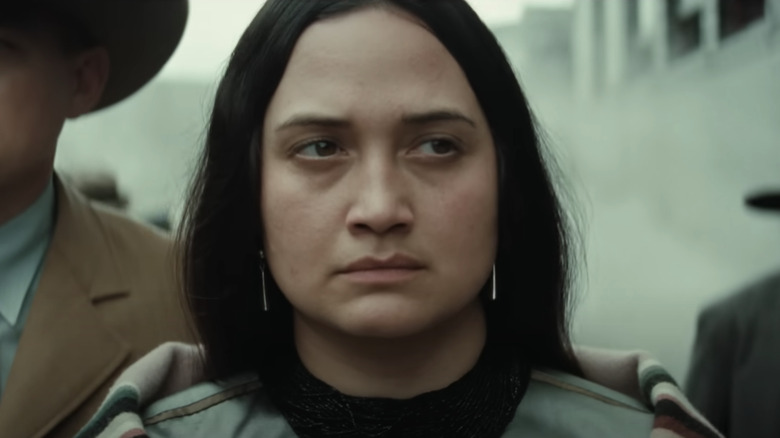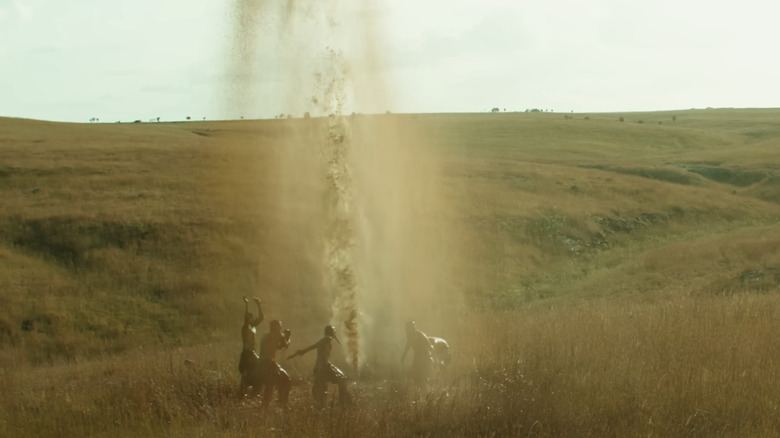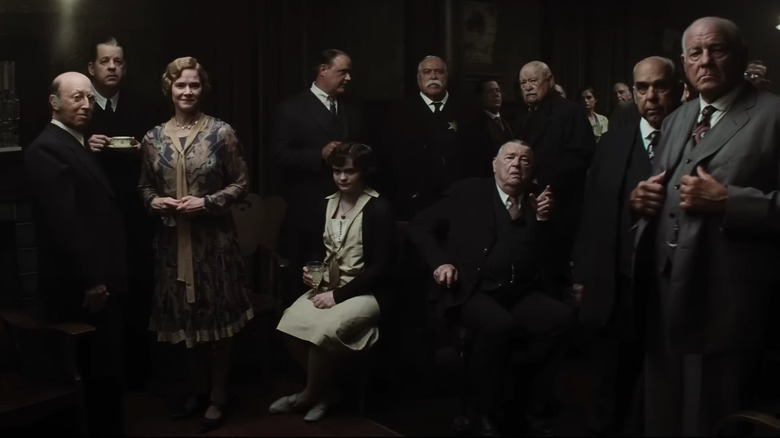Killers Of The Flower Moon: The True Story Behind The Crime Drama
When it comes to the films of Martin Scorsese, some of his absolute best are based on true stories. From crime epics like "Goodfellas," "Casino," and "The Irishman," to epic studies into the lives of some of history's most influential figures like "Kundun" or "The Aviator," the director has made some of his best work covering real-life stories.
His latest film, "Killers of the Flower Moon," looks like it will help to continue this tradition for the beloved filmmaker. Based on the book of the same name by David Grann, the adaptation traces a series of ugly moments in American history where indigenous people were murdered for the rights to their oil-rich land.
What's more, "Killers of the Flower Moon" also takes place in Oklahoma, the site of another series of racist killings motivated by greed, the 1921 Tulsa Race Massacre. And, while that largely forgotten grisly historical event was highlighted when the event was discussed in HBO's "Watchmen," it looks like Scorsese's film could help to shine a similar light on this dark chapter in the brutal history of colonialism and oppression faced by Indigenous peoples.
The events of the story led to the birth of the FBI
The history behind "Killers of the Flower Moon" began when residents of the Osage Indian Reservation discovered oil on their land in 1897 and were faced with the prospect of finally getting in on the elusive American dream. As each member of the reservation gained "headrights" to a portion of the oil produced from their land in 1907, the tribespeople began to grow wealthy from the land that had been assigned to them by the American government.
However, a cabal of businessmen undertook a plan to steal these rights away through murderous subterfuge. A huge number of wealthy Osage tribespeople were murdered as part of this plan to gain access to the oil the Osage land held. A local cattle baron named William Hale (the leader of a crime ring where he was known as "The King of Osage Hills") was eventually found to be responsible.
This is the character played by Robert DeNiro in "Killers of the Flower Moon," and one of his victims is Mollie Kyle (Lily Gladstone), the wife of his own nephew, Ernest Burkhart (Leonardo DiCaprio). While the trailer's tone for the film already suggests the grim truths behind this horrific era, which spanned three decades from 1918-1931, the final shot is the most suggestive of how the film will reckon with this history.
Over 60 Osage tribespeople were murdered over the years
When the trailer for "Killers of the Flower Moon" puts the focus on the "wolves" that are mentioned throughout, it is the members of William Hale's conspiracy that are ultimately showcased in the final shot. Though the FBI, then known as the Bureau of Intelligence, investigated the crimes, it was inevitably found that some members of law enforcement were deliberately trying to derail the investigation.
The men who were ultimately held responsible for the murders were William Hale, Bryan Burkhart, Ernest Burkhart, John Ramsey, and Kelsey Morrison. While Bryan turned on the others to save himself from jail time, Morrison was already in prison and received a life sentence as a result of his involvement in the killings.
As for Hale, Ernest Burkhart, and Ramsey, all three were found guilty of the crimes and sent to Oklahoma State Penitentiary with life sentences. Unfortunately, despite protests by the surviving Osage tribespeople, the trio were all inevitably paroled, with Burkhart receiving a full pardon.
How Martin Scorsese's adaptation of "Killers of the Flower Moon" deals with this tragic series of ultimately unpunished killings will likely be the lynchpin for how well the film is received as a result.


